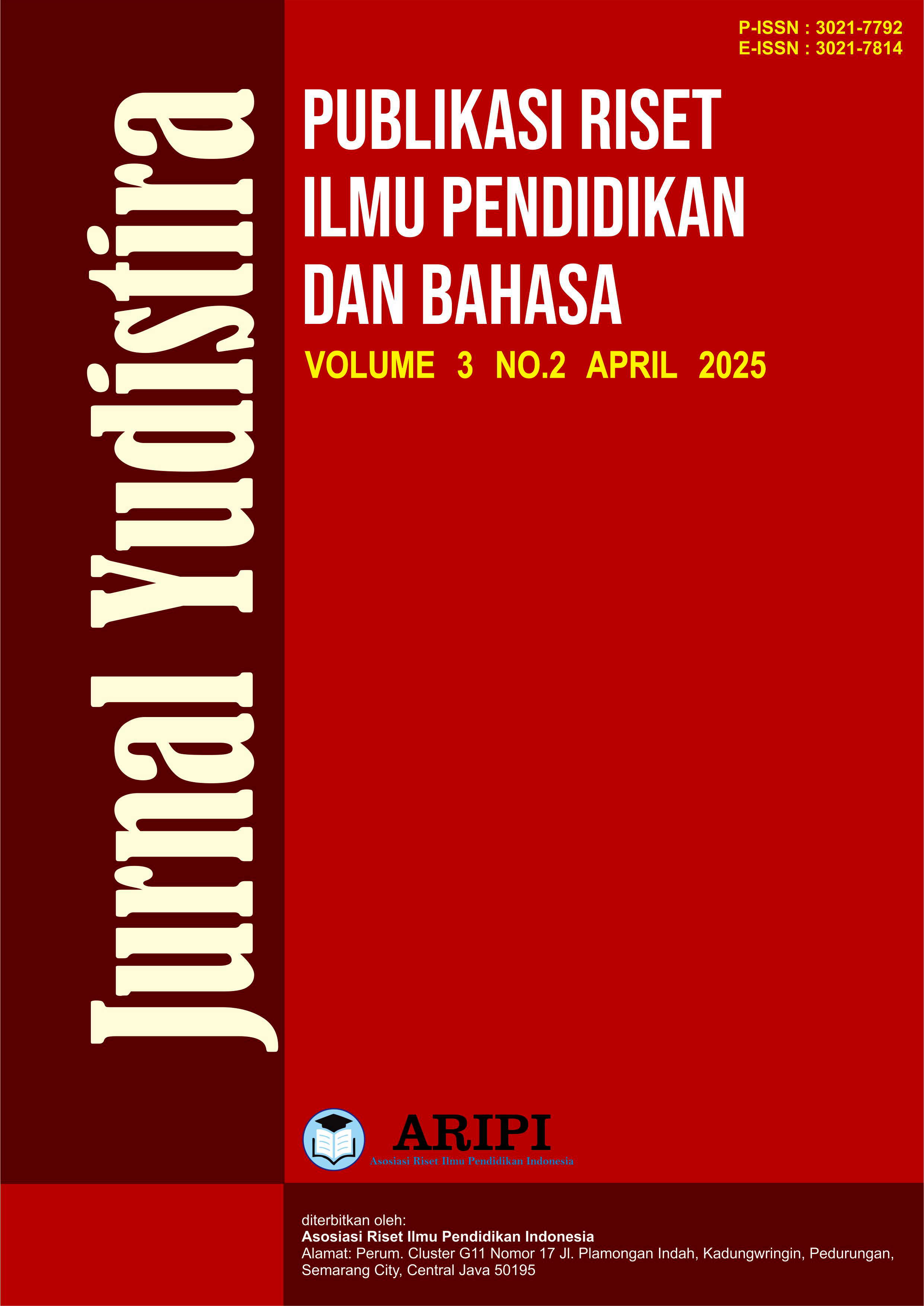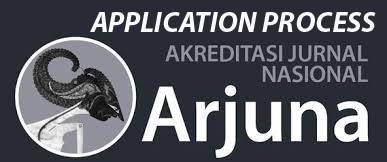Peningkatan Kemampuan Motorik Halus Melalui Kegiatan Kolase Menggunakan Kapas di Kelompok B Ra Al Hidayah
DOI:
https://doi.org/10.61132/yudistira.v3i2.1685Keywords:
fine motor skills, collage, cotton, early childhood, RA Al HidayahAbstract
This study aims to improve children's fine motor skills through collage activities using cotton in group B RA Al Hidayah. Fine motor skills are an important aspect in early childhood development, which involves the coordination of small muscles to support various activities, such as writing, cutting, and drawing. The research method used is classroom action research (CAR) which is carried out in two cycles, with each cycle including the planning, implementation, observation, and reflection stages. The subjects of this study were 15 children in group B at RA Al Hidayah. Data collection techniques were carried out through observation, documentation, and interviews. The results of the study showed a significant increase in children's fine motor skills after participating in collage activities using cotton. Children became more skilled in controlling finger movements, tearing, sticking, and arranging cotton according to the given pattern. In addition, collage activities also increased children's creativity and concentration in completing tasks. The conclusion of this study is that collage activities using cotton media can be an effective strategy for developing fine motor skills in early childhood. The recommendation given is for teachers to integrate collage activities more often in learning, and to utilize various simple materials that are easy to find to stimulate optimal fine motor development.
Downloads
References
Anderson, L. W., & Krathwohl, D. R. (2001). A taxonomy for learning, teaching, and assessing: A revision of Bloom's taxonomy of educational objectives. Longman.
Creswell, J. W. (2018). Research design: Qualitative, quantitative, and mixed methods approaches. SAGE Publications.
Dockett, S., & Perry, B. (2014). Teaching and learning in early childhood education. Routledge.
Edwards, C., Gandini, L., & Forman, G. (2012). The hundred languages of children: The Reggio Emilia experience in transformation. Praeger.
Frost, J. L., Wortham, S. C., & Reifel, S. (2018). Play and child development. Pearson.
Ginsburg, K. R. (2007). The importance of play in promoting healthy child development. Pediatrics, 119(1), 182–191.
Hidayat, A., & Suryani, N. (2020). Pengaruh kegiatan kolase terhadap perkembangan motorik halus anak usia dini. Jurnal Pendidikan Anak Usia Dini, 9(2), 123–135.
Isbell, R., & Raines, S. (2012). Creativity and the arts with young children. Cengage Learning.
Jalal, M., & Musthofa, M. (2021). Pengembangan motorik halus melalui aktivitas seni kolase. Jurnal Pendidikan Islam Anak Usia Dini, 5(1), 67–80.
Jones, E., & Reynolds, G. (2011). The play's the thing: Teachers' roles in children's play. Teachers College Press.
Kamii, C. (2014). Young children reinvent arithmetic: Implications of Piaget's theory. Teachers College Press.
Kemple, K. M. (2017). Social studies, literacy, and social justice in the elementary classroom: A guide for teachers. Routledge.
Moore, A. (2019). Early childhood education: A practical guide. Routledge.
Mustafa, M., Widodo, S., & Putri, R. (2021). Improving fine motor skills in early childhood through educational games. Early Childhood Research Journal, 12(1), 45–56.
Neuman, S. B., & Dickinson, D. K. (2011). Handbook of early literacy research. Guilford Press.
Nindya, A., & Wulandari, S. (2020). Aktivitas seni dan pengaruhnya terhadap perkembangan motorik halus anak usia dini. Jurnal Psikologi Anak, 4(2), 98–110.
Piaget, J. (2013). The construction of reality in the child. Routledge.
Rahmawati, D., & Sari, P. (2022). Collage activities as an alternative method for fine motor development in early childhood. Journal of Early Childhood Studies, 7(2), 89–102.
Roopnarine, J. L., & Johnson, J. E. (2018). Approaches to early childhood education. Pearson.
Rusman. (2020). Model-model pembelajaran: Mengembangkan profesionalisme guru. Rajawali Pers.
Santrock, J. W. (2021). Life-span development. McGraw-Hill Education.
Sujiono, Y. N. (2013). Konsep dasar pendidikan anak usia dini. Indeks.
Susanto, A. (2017). Perkembangan anak usia dini: Pengantar dalam berbagai aspek perkembangannya. Prenadamedia Group.
Vygotsky, L. S. (1978). Mind in society: The development of higher psychological processes. Harvard University Press.
Wardani, N., & Pratiwi, R. (2021). Efektivitas pembelajaran berbasis seni untuk pengembangan motorik halus anak. Jurnal Pendidikan Anak, 6(1), 34–49.
Wood, D. (2003). How children think and learn: The social contexts of cognitive development. Blackwell Publishing.
Yuliani, S. (2020). Pengaruh permainan kreatif terhadap keterampilan motorik halus anak usia dini. Jurnal Pendidikan Anak Usia Dini Indonesia, 5(3), 201–215.
Zakiyah, S. (2021). Implementasi metode bermain dalam meningkatkan keterampilan motorik halus anak. Jurnal Ilmiah Pendidikan Anak Usia Dini, 8(1), 56–72.
Zigler, E., Singer, D. G., & Bishop-Josef, S. J. (2004). Children's play: The roots of reading. Zero to Three Press.
Zulkifli, H., & Dewi, N. (2022). Aktivitas seni kolase sebagai media stimulasi motorik halus anak TK. Jurnal Pendidikan Kreatif, 4(2), 78–92.
Downloads
Published
How to Cite
Issue
Section
License
Copyright (c) 2025 Jurnal Yudistira : Publikasi Riset Ilmu Pendidikan dan Bahasa

This work is licensed under a Creative Commons Attribution-ShareAlike 4.0 International License.






